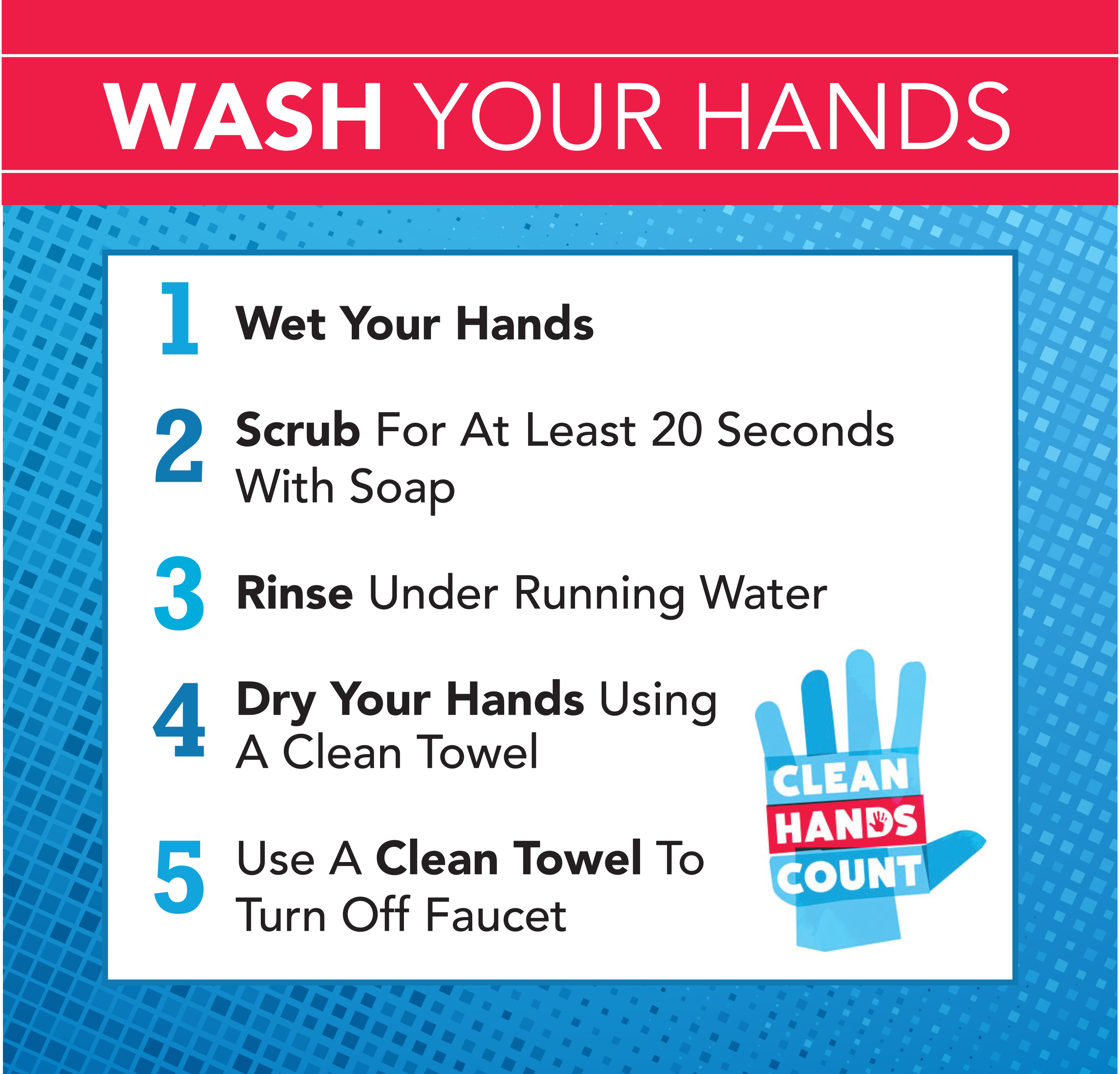It seems so basic! But correctly washing your hands could mean the difference between fighting a cold for a few days or spreading your bug to the next person. We could all use a refresher! Check out this graphic to see where you might miss a vital handwashing step.
No matter where you are, keeping your hands clean is one of the most important steps you can take to protect yourself from germs that can make you sick. Regularly washing your hands or using alcohol-based hand sanitizer when soap and water aren’t readily available helps keep you and those around you healthy.
You accumulate germs on your hands as you touch people, surfaces, and objects throughout the day. You can infect yourself with these germs by touching your eyes, nose, or mouth or spreading them to others. Although it’s impossible to keep your hands germ-free, washing your hands with soap and water frequently can help limit the transfer of bacteria, viruses, and other microbes.
Follow along with the guide below to make sure you’re getting all the essential steps of washing your hands. Take advantage of the tips to make introducing hand washing to your kids easier.
Step 1: Wet your hands
Step 2: Scrub for at least 20 seconds with soap
Step 3: Rinse under running water
Step 4: Dry your hands using a clean towel
Step 5: Use a clean towel to turn off the running water
Germs are everywhere! They can get onto our hands and items we touch during daily activities and make us sick. Cleaning hands at crucial times with soap and water or hand sanitizer that contains at least 60% alcohol is one of the most important steps you can take to avoid getting sick and spreading germs to those around you. If you need a sink handy, washing your hands becomes pretty tricky! That’s when using an alcohol-based hand sanitizer is a great option! You can properly sanitize your hands by following these three easy steps.
Step 1: Apply the sanitizer to the palm of one hand
Step 2: Cover all surfaces of the hand
Step 3: Rub your hands and fingers together until they are dry, around 20 seconds.
One thing to remember is that using hand sanitizer is different from soap and water. There are important differences between washing hands with soap and water and using hand sanitizer. Soap and water work to remove all types of germs from hands, while sanitizer acts by killing certain germs on the skin. Although alcohol-based hand sanitizers can quickly reduce the number of germs in many situations, they should be used in the right situations. Soap and water are more effective than hand sanitizers at removing certain kinds of germs that make people sick, like the norovirus, which can be dangerous for vulnerable groups like the elderly and young children.
Hand sanitizers also may not remove harmful chemicals like pesticides and heavy metals.
Handwashing reduces the amounts of all types of germs, pesticides, and metals on hands. Knowing when to clean your hands and which method to use will give you the best chance of preventing and spreading sickness to others.
Remember that kids need clean hands too! Encourage your children to stay healthy by helping them wash their hands frequently. Wash your hands with your child to show them how it’s done. To prevent rushing, suggest washing hands for as long as it takes to sing “Happy Birthday” twice. Keep a step stool handy if your child can’t reach the sink independently.
Whether in a hospital, restaurant, at school or just running errands, frequently washing your hands can make a big difference to the people around you! Even though you think you know how to clean your hands properly, follow these steps next time! You may be surprised to see what step you’re missing in your routine!



